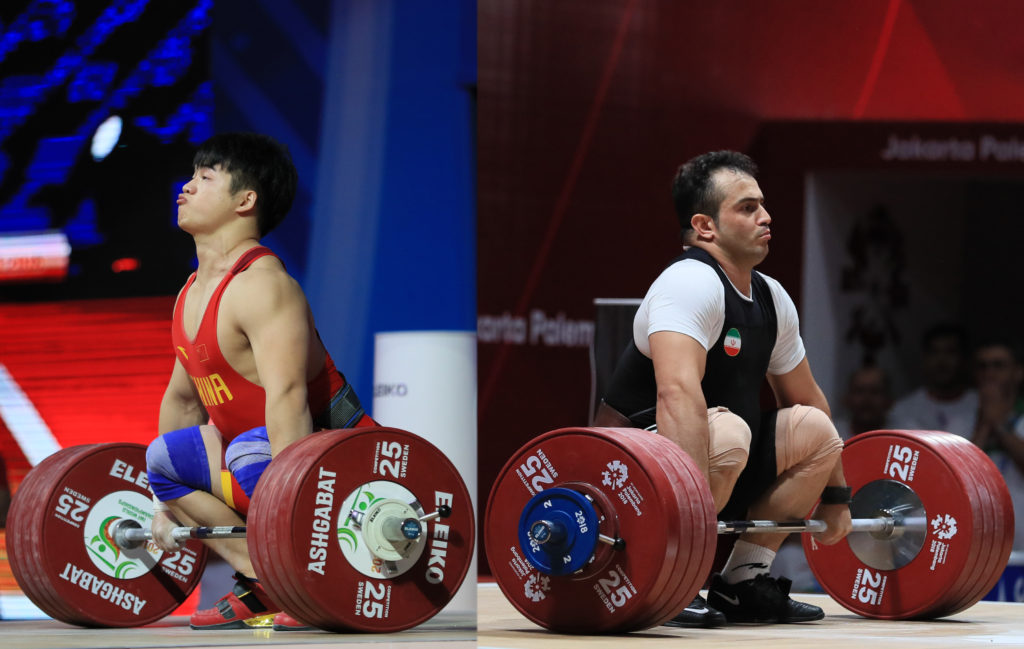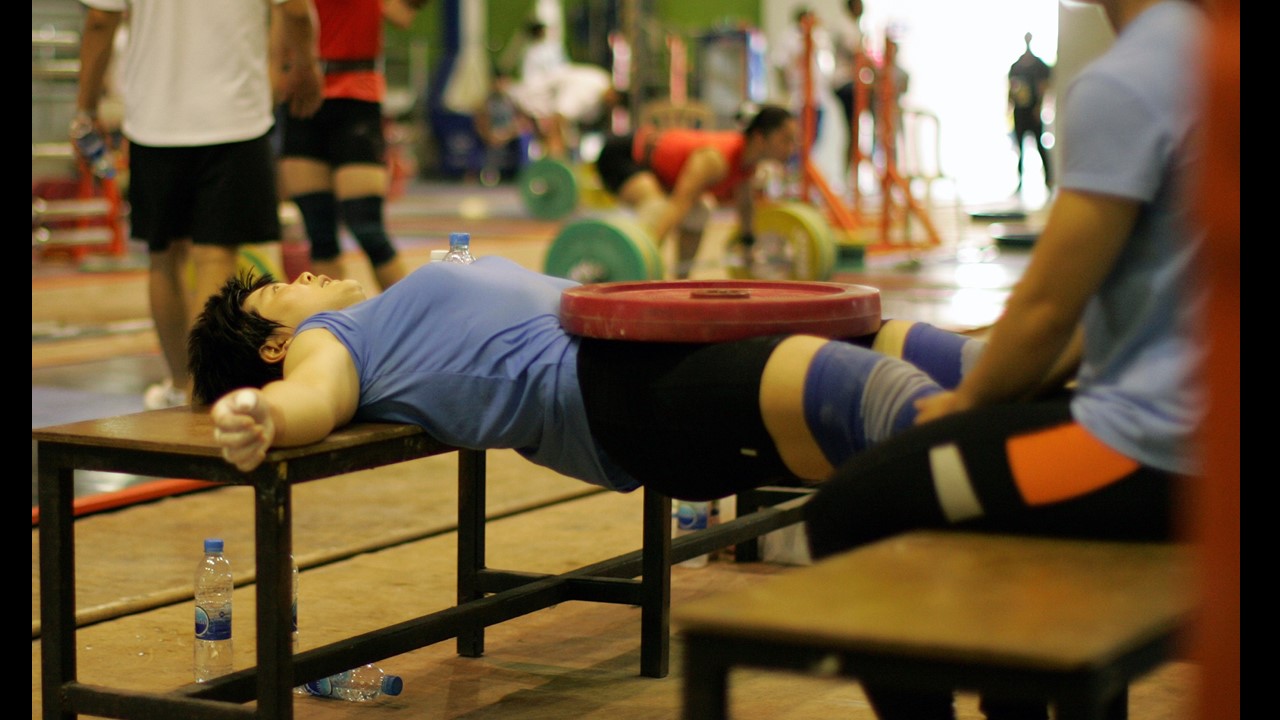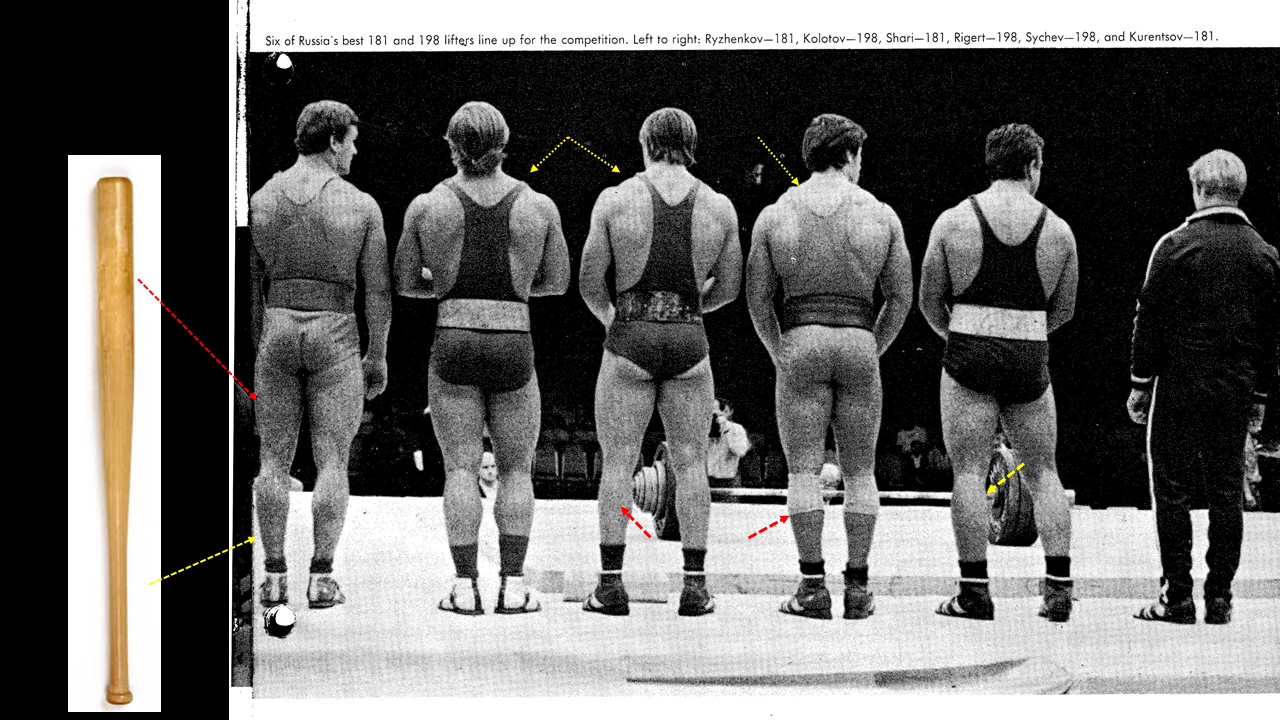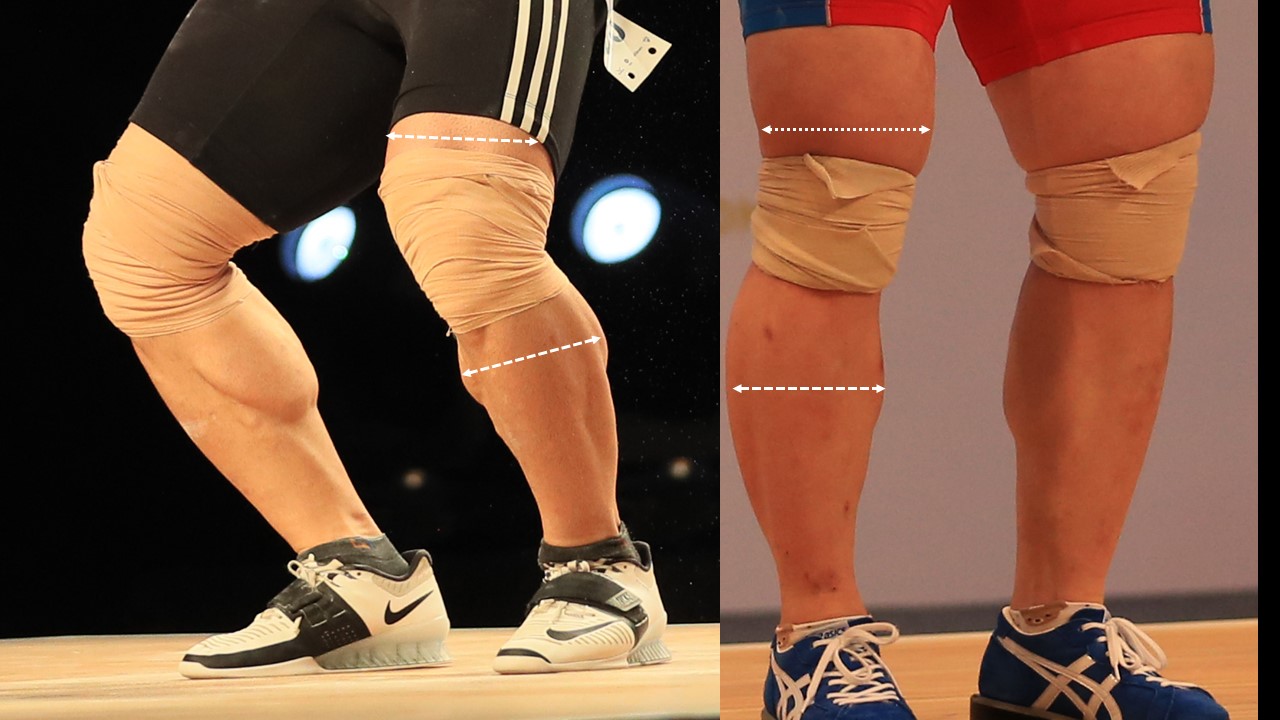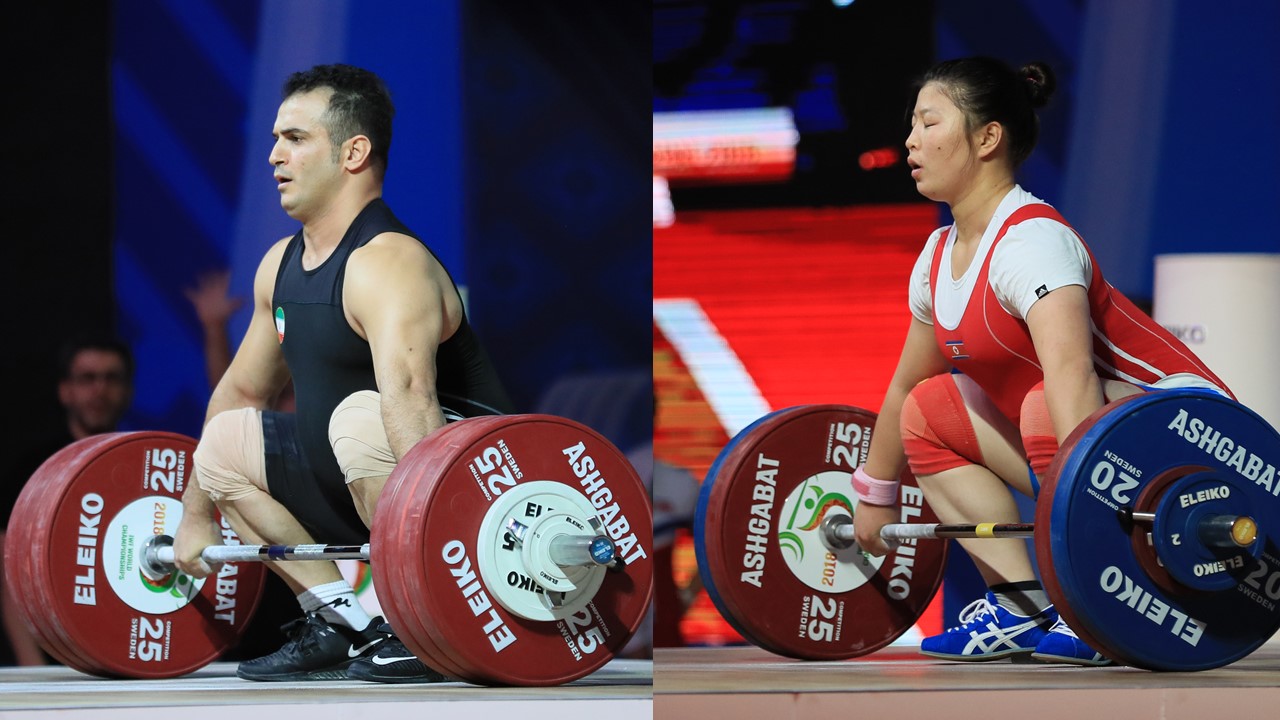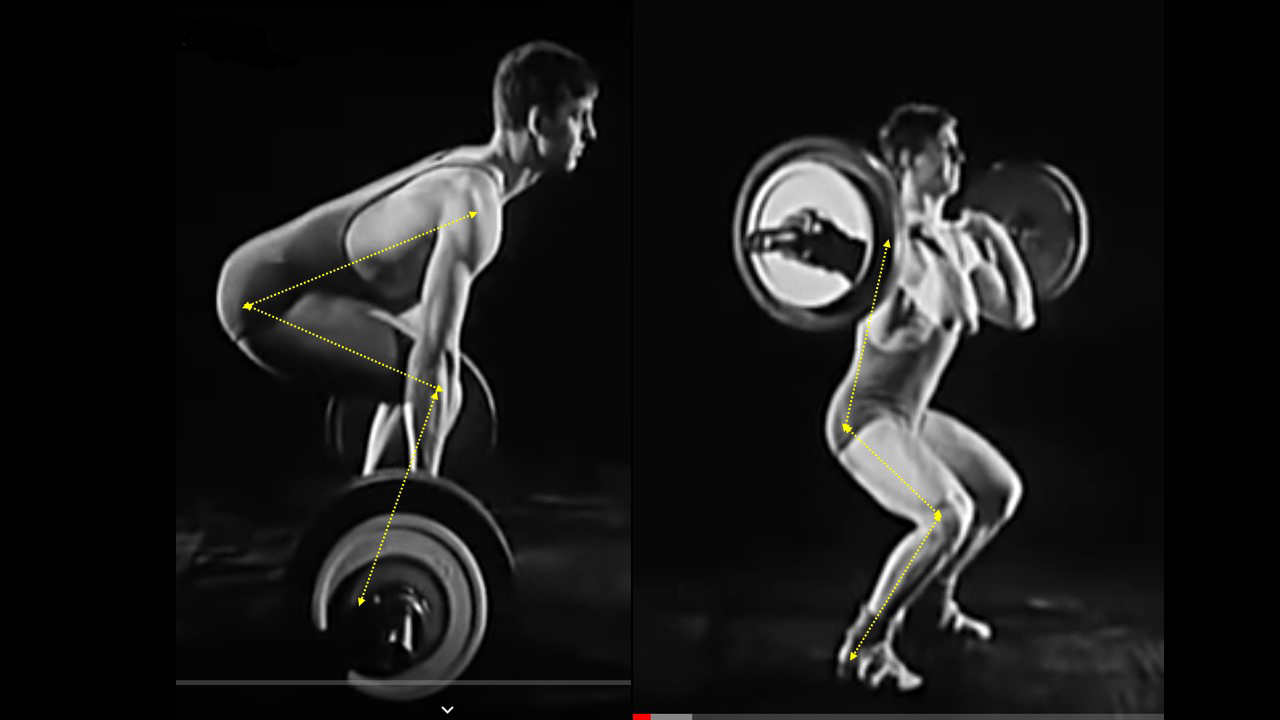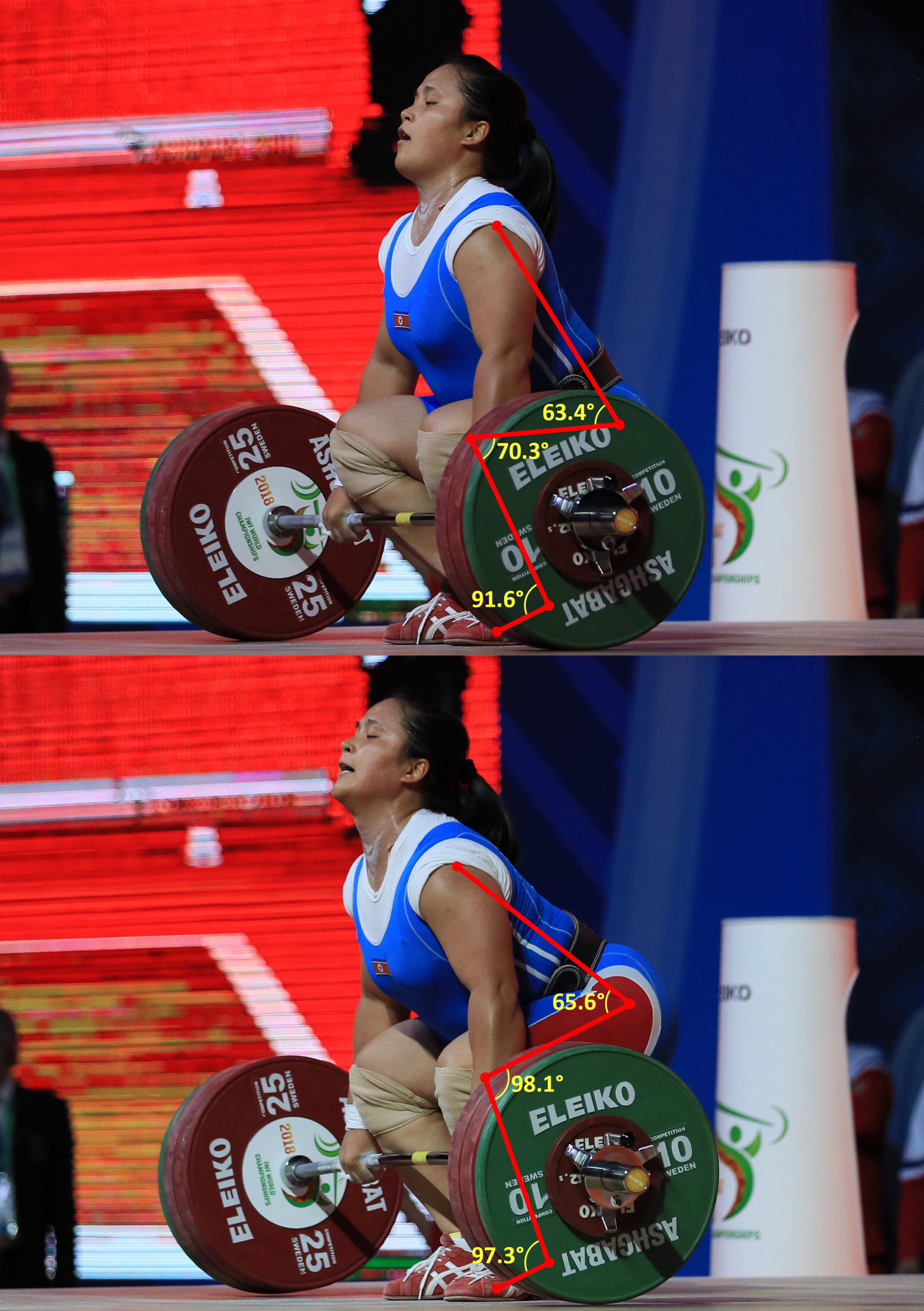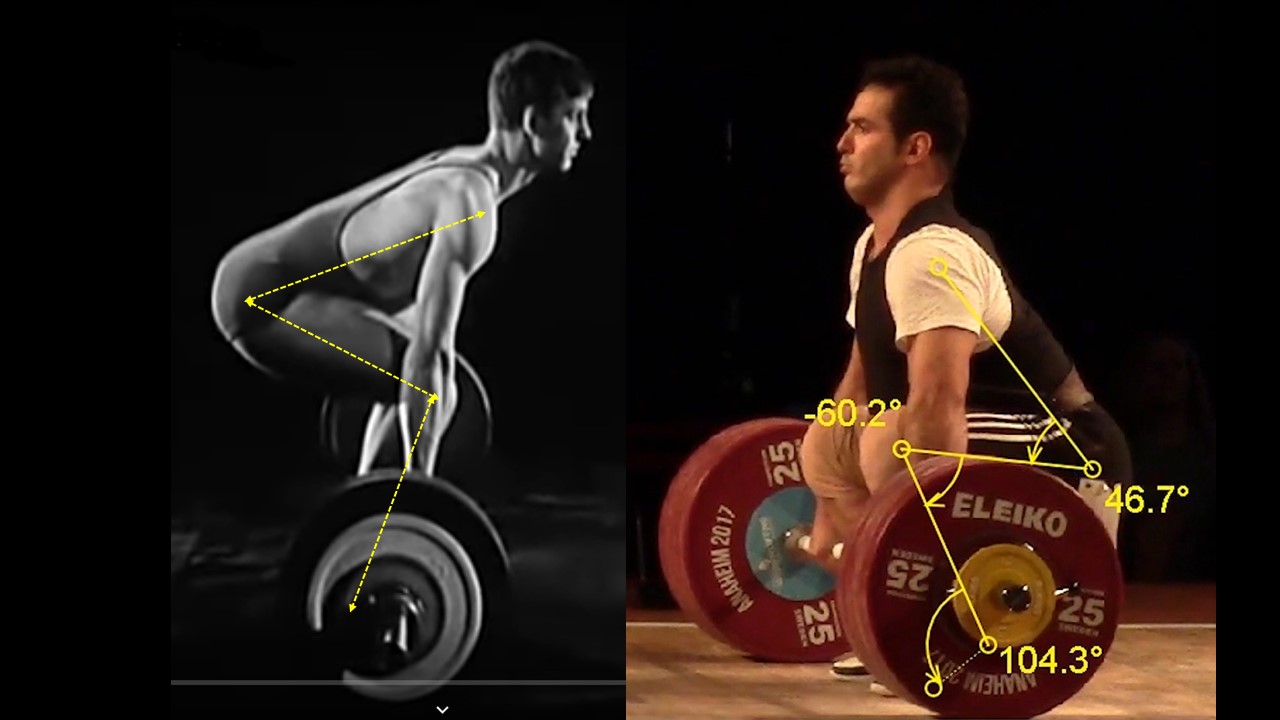
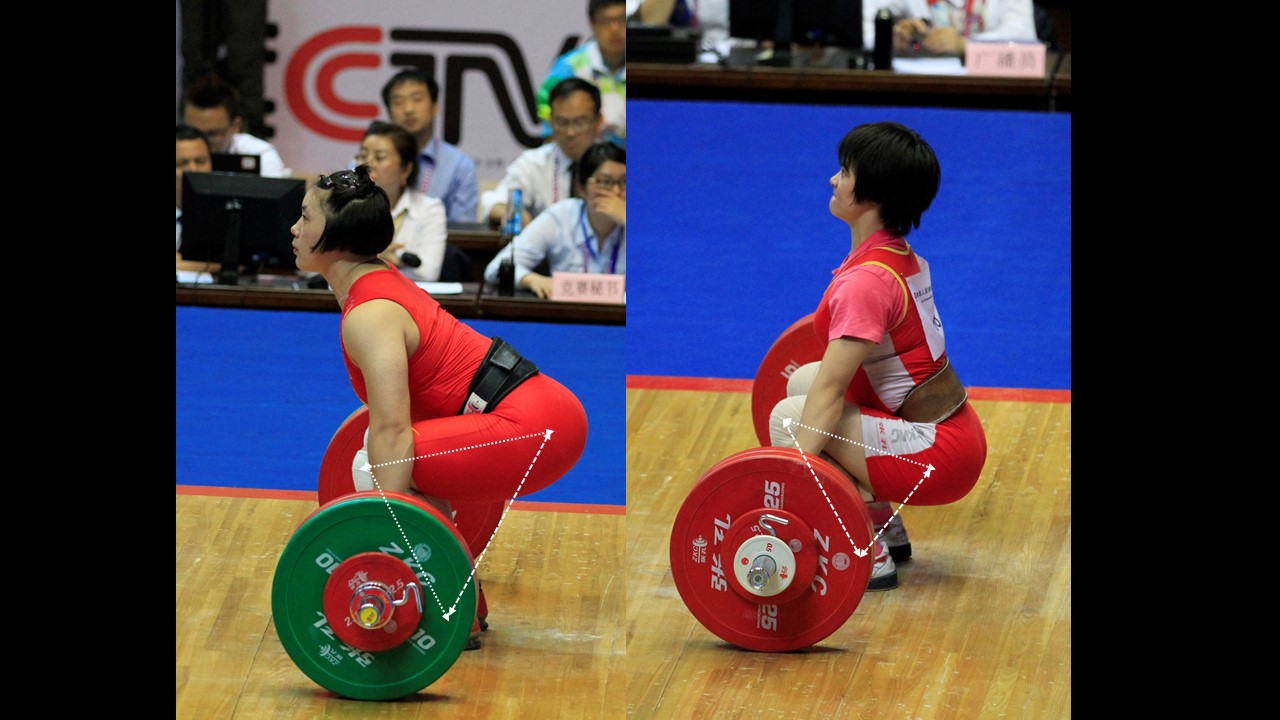 Traps, Bats & Calves: Considerations for the Hungarian Start
Traps, Bats & Calves: Considerations for the Hungarian Start
Andrew Charniga
Sportivnypress. com
“Although man stands on two legs, his skeleton was originally designed for four”. Ref: “The bridge that walks” William K. Gregory, Natural History Vol. 39:1:33 – 48, 1937
Figure 1. Female lifter performing isometric back exercise, typically associated as a means to cope with the lumbar pain from weightlifting training. Charniga photo.
The lumbar area of the spine is the most common site of pain and injury for the weightlifter; with the shoulder girdle a close second (A.N. Vorobeyev, 1978; 1988).
“Lumbar pain most often is the cumulative result of many workouts. It may be that there is not one athlete who has not experienced lumbar pain after training more than 4 – 5 years.” A. N. Vorbeyev, 1988
That being said, given the brevity of the classic exercises, even with maximum weights, the disposition of the body’s links in the starting position of the snatch and the clean and jerk are critical. All of the Soviet era textbooks and numerous papers have covered this important element of the weightlifter’s technique.
Nonetheless, the research of the starting disposition of the weightlifter’s links (shin, thigh, trunk) has been focused for the weightlifter to adopt such a posture to generate the most effective force to separate and accelerate the barbell in the pull. And, this research has centered around the optimal disposition of the feet, shins, thighs, trunk, hand spacing and so forth; through biomechanical measurement of various postures (Kanyevsky,1983 ).
The dimensions of the barbell are fixed, i.e., the height of the bar from the floor is a constant; conditions are the same for everyone. Consequently, regardless of the relative of lengths of the athlete’s trunk, arm and leg; the larger the knee angle at the start the greater the trunk is tilted closer to the horizontal and vice versa; the smaller the knee angle, the more the disposition of the trunk is towards the vertical.
Therefore, the relative stress (moment) on the legs varies with the degree of knee bend: the more the knee and ankle joint are flexed the larger the loading of the legs; the smaller the loading moment on the back, and vice versa.
With a very low start, i.e., a knee of angle 50⁰ for instance, the hips will shift the greatest distance during the pull phase of the classic exercises.
Conversely, with a large knee angle at the (high) start, the greater distance the shoulder joints shift during the pull phase; and with this movement, the larger the strain on the lumbar spine. The reason being the trunk is almost vertical with a very low, i.e., Hungarian start, knee angles of up to 50⁰ and about horizontal with high start, when the knee angle is 135⁰. (Zhekov, I.P. 1976)
A general rule of thumb: the closer a link to the vertical, the lower moment; and vice versa; the closer to the horizontal the larger the moment. For all practical purposes this means, at the larger knee angles characteristic of a high start there is proportionally greater shear strain on the lumbar area of the back, i.e., the weightlifter’s weak link. The area most often the site of pain and injury. And, conversely, there is less strain in the lumbar area with smaller knee angles.
Furthermore, it is common knowledge an athlete’s muscular topography is a reflection of the relative stress the various muscles are subjected in the performance of exercises; especially to the peculiarities of his/her technique.
Consider the contrasting development of thigh to shank musculature depicted in figure 2. The huge trapezius development and the noticeably disparate development of the shank relative to thigh muscles is a reflection of the relative importance Soviet weightlifting sport science assigned these muscle groups. Power snatch, power clean and pulls comprised a relatively large volume of the training load of those days.
Consequently, with a lot of pulling, shrugging of shoulders and half bending of knees one obtains the development depicted in the photo of messrs. Rigert, Kurentsov, Shari, Ryzhenkov, Sychev and Kolotov. Although Soviet times are long gone, the ideas of how to train, including the relative importance of the various muscle groups continue to this day.
Figure 2. Six Soviet weightlifters (3 – Olympic champions) at the 1972 Baltic cup. Note the relatively large trapezius development and with one exception the relatively small development of the calf muscles relative to the thigh musculature, i.e., the shape of a baseball bat. The photo evinces less bending at the ankle from a large loading of power snatch, power clean, pulls and so forth; which in turn, is indicative of the minor role in those days assigned the calf muscles/Achilles tendons in weightlifting technique. Tommy Kono photo.
Now, contrast the the lower extremity musculature of two Olympic champions in figure 3 with those of the Soviet lifters in figure 2. The large mass of the calf musculature, relative to thigh muscles, is an indication these muscles are heavily used in weightlifting exercises. So, it is no coincidence both athletes in figure 2 lift from the Hungarian start position, i.e., with fully flexed legs (Charniga, 2016).
Figure 3- 4. Note the large mass of calf muscles compared to thigh of the Olympic champions in figure 3. A male Olympic champion is on the left; and, a two time Olympic gold medalist female is on the right. Both employ the ‘Hungarian’ start, i.e., with fully/or nearly flexed lower extremities (figure 4). The relatively huge development of calf/shank musculature is an indication these muscles are heavily loaded over a large amplitude of movement in rising from this low position. Charniga photos.
The muscles of the shank (calf), especially soleus, are heavily involved in straightening the lower extremities from fully flexed knees; all the more so when the ankles are tilted significantly forward.
The development of calf musculature depicted in the figure is due to the inertia coupling phenomena. Quadriceps, gastro – soleus and other single joint plantar flexor muscles are synergists. The soleus muscle in particular, produces a counterclockwise torque on the shin which is coupled with the clockwise torque the quadriceps muscles exert on the thigh.
Consequently, athletes who use the Hungarian start accentuate the muscles of the shank in the pull; which in turn, tends to lessen the loading on the lumbar spine. The reason being the trunk is in more vertical disposition at the beginning of lifting than would be the case with a classic or large knee angle in the start.
The fact of the matter is, the skeleton of a four legged animal is designed like a cantilever bridge for walking on four legs (Krogman, 1951). Conversely, the human spine evolved with cervical, thoracic and lumbar curvatures is designed to accommodate the vertical stresses connected with walking/running on two legs.
A logical effort to lessen the loading on the lumbar spine to lift big weights is a positive in both the short term and long term well being of the weightlifter.
An optimal disposition of the weightlifter’s links (trunk, thigh, shin) in the dynamic start, defined as the instant of barbell separation (IOS), occurs when knee angles are in the range of 110 – 130⁰ at IOS (Zhekov, 1976).
However, according to Zhekov, 1976, the knee angle at the start should be no less than 90°. So, why would one fully flex knees in the start and consequently begin lifting the barbell from a weak position?
Knee pain and depth of squatting
… the highest retro-patellar compressive forces and stresses (at knee joint) can be seen at 90°.” Hartman, 2013
Although knee injuries are not the plague of the weightlifter like the lumbar problem; knee pain is. Consequently, another factor to consider in weightlifting technique is the relationship between knee pain and depth of squatting.
Many coaches and athletes believe fully flexing the lower extremities places more strain on the knee joints. This of course means the opposite to be true: compression stress on the knee reaches maximum at a knee angle of 90⁰; subsequently it falls as the knee and ankles are fully flexed (Hartman, 2013). So, in point of fact, fully flexing lower extremities subjects the knees to less, not greater strain.
Power snatch, power clean and other such movements where the lifter stops the descending body – barbell unit, not only place the highest strain on the knee joints; but are the principle source of knee pain. One need only glance around an international training hall and see the proliferation of knee wraps and bandages, pain tape and so forth to recognize knee pain is a common affliction for the weightlifter.
Starting from knee angles of 90 – 110⁰ accentuates strain at the knee when performing power snatch and power clean. The athlete proceeds from overcoming the resting inertia of the barbell from the starting position to stopping the bodyweight/barbell system at approximately the same knee angles, i.e., from large strain to larger strain at the knee. See figure 5.
Figure 5. Illustration of knee angle in the classical start contrasted with approximately the same angle of knee joints when the movement is fixed in the power clean.
Figures 6-7. Elite female beginning to lift from a Hungarian start with significant tilting of shins. Note as she begins lifting knee angle increases from 70 to 98⁰; whereas the hips rise and the change in hip angle is negligible; from 63 – 65⁰. Charniga photos.
Consider for a moment the female in figures 6-7 pulling from a Hungarian start. An obvious motion without movement occurs from the beginning of the effort to the instant of barbell separation (IOS). The athlete’s legs are working almost isometrically over a rather long period to bend the bar up to IOS. The tendons and ligaments accumulate strain energy in synchrony with the elastic bowing of the bar as this proceeds. The release of this strain energy can coincide with the elastic recoil of the bar to enhance the muscular contraction of the leg muscles.
Notice the young woman’s hips rise faster than shoulder girdle; all the while the barbell remains on the floor. One still hears the adage that the hips, shoulders and barbell should rise simultaneously in the lifting from the floor. This inaccuracy continues despite the fact that hips rise faster than barbell and shoulders, regardless of the knee angle at the start; a phenomena first observed by Luchkin in the 1940s (Verkovsky, 1963).
There is a longer period of motion without movement with the Hungarian start because the muscles of the lower extremities are working at a mechanical disadvantage, applying force initially at knee angles as small as 50⁰.
Although no research exists in support, one could argue the strain energy in the lower extremities can be effectively released later in synergy with the recoil of the barbell; conceivably overcoming the mechanical disadvantage of the low start.
Another consideration, although not proven with facts and figures is the growing success of the increasing numbers of athletes employing the Hungarian start. More often than not these athletes are from Asia. And, there is no doubting the rising dominance of Asian lifter on the international scene. For instance, the female Asian lifters won 8 of 10 classes and males 7 of 10 at the 2018 world weightlifting championships.
According to Druzhinin (1974):
“Typically the athlete – barbell system shifts backwards from the vertical during the lift up to knee level. The athlete’s body instead of the barbell shifts backwards with a high starting position; only the barbell shifts backwards with a medium starting position; and, with a low start the barbell shifts backwards and the body forward.”
Druzhinin’s observation that the barbell shifts backwards while body moves forward when the weightlifter employs a low start (Hungarian) is consistent with various observations of the reactive nature of modern weightlifting technique: there is more movement of the body and it’s individual links than is considered acceptable with the classic model (Charniga, 2015).
A comparison of different start postures:
/ High start, with a large knee angle from 107 – 112⁰ is the most advantageous (Verkovsky, 1963)
Negatives:
- disproportionate loading on the lumbar spine;
- leg muscles perform work over a smaller amplitude of motion (Verkovsky, 1963);
- force generated by the legs slows significantly as barbell reaches mid – shin height (Verkovsky, 1963);
- a vertical disposition of the shin occurs sooner in the pull, i.e., the force arm of gravity reaches maximum sooner because trunk is almost horizontal (Verkovsky, 1963);
- prolonged lifting with a disproportionate loading on the back is connected with lumbar pain, or injury.
/ Classic start with barbell separation at a knee angle of 110 – 130⁰
/ a dynamic start (instant of barbell separation) with a knee angle of 110 – 130⁰ can be considered optimal because the loading moments on trunk and leg levers are smallest (Zhekov, 1976);
/ less loading on the lumbar area; but ankles quickly assume vertical, loading shifts disproportionately to back.
/ Hungarian start
- least strain on lumbar spine of the three variants;
- less strain on knee joints;
- compression stress on the knee is further mitigated as the athlete shifts through knee angle of 80 – 110⁰ with inertia rising from the low squat;
- prolonged static strain in the lower extremities up to IOS may be recouped as elastic recoil;
- possible advantages for balance and stability when the athlete fixes the weight, i.e., the lifter moves from a spatial orientation of ‘squat to squat‘.
Figure 8. Contrasting dispositions of shin, thigh and trunk for classic start (on the left) and Hungarian start (on the right).
Conclusions
Two major sources of pain, injury or just discomfort for the weightlifter occur at lumbar spine and knee joints. The lumbar problem can be connected with chronic straining with the trunk tilted significantly away from the vertical. In the same vein, knee pain can arise in connection with a large volume of significant straining over knee angles of 90 – 130⁰.
The starting position of the weightlifter for pull phases of the clean and the snatch is crucial to the successful execution of the exercises. A Hungarian start where one begins to lift from relatively small knee angles 50 – 80⁰ with a disposition of the trunk closer to the vertical is the weakest disposition of the weightlifter’s links to begin lifting the barbell. Yet this technique has distinct advantages for performance of the lifts as a whole.
The classic start from a knee angle of close to 90⁰ and with a barbell separation within the 110 – 130⁰ range involves the minimum moments on legs and trunk. The high start with large knee angle and trunk close to horizontal is strongest position with the least efficient use of the legs and the greatest strain on the lumbar spine.
Advantages of the classic and high start are connected only with the effectiveness of the force generated to separate the barbell from the floor. Not taken into account is the efficacy of the entire motion from pull to descent and fixation of the barbell in the squat.
An important factor to consider for lifters whom employ the classic and high start and incorporate significant volumes of power snatch, power clean and pulls in training is that these lifters begin the pull and stop at the nearly the same angles of knee and trunk, i.e., chronic stress from repetitive overload at joint angles where there is highest strain.
At least some of the aforementioned repetitive overload stress is mitigated when the weightlifter employs the Hungarian start. There is less strain with knees lifting from the fully flexed disposition. Furthermore, there is less strain on the lumbar spine as the trunk is closer to vertical, i.e., the closer a link to vertical the smaller the moment.
A possible advantage of a Hungarian start would be the closer proximity of trunk to vertical; facilitating kinesthetic and spatial awareness of balance in fixing the the barbell in the low squat of the snatch and the clean, i.e., the lifting proceeds from squat to squat.
The Hungarian start most effectively utilizes the potential of the all but forgotten muscles in the weightlifter’s arsenal: the calf musculature.
References
1/ Vorobeyev, A.N., Weightlifting, Textbook for the Institute of Sport, FIS, Moscow, 1988, Translated by Andrew Charniga
2/ Vorobeyev, A.N., Weightlifting, FIS, Moscow, 1978, Translated by Andrew Charniga
3/ Kanyevsky, V.B., “The starting position in the snatch and the clean and jerk for weightlifters of differing body types”, Dissertatsiia na coiskanie Uchenoi stepeni Kandidata pedagogicheskikh Hauk, 1983
4/ Zhekov, I.P., Biomechanics of the weightlifting exercises, FIS, Moscow, 1976. Sportivny
5/ Charniga, A., “Can there be such a thing as an Asian pull?, www.sportivnypress.com
6/ Charniga, A., “The foot, the Ankle and an Asian Pull”. www.sportivnypress.com
7/ Hartman, H., Wirth, H., Klusemann, M., “Analysis of the Load on the Knee Joint and Vertebral Column with Changes in Squatting Depth and Weight Load”, Sports Med, (2013) ;43:993-1008 DOI 10.1007/s40279-013-007-6
8/ Krogman, W., “The Scars of Human Evolution”, Scientific American Vol. 185:6:54-57, 1951 “Although man stands on two legs, his skeleton was originally designed for four” Ref: “The bridge that walks” William K. Gregory, Natural History Vol. 39:1:33 – 48, 1937
9/ Verkovsky, F., “The clean with a deep squat”, Tribuna Masterov, Moscow, FIS, 1963:56 – 80. Translated by Andrew Charniga
10/ Druzhinin, V.A., “A rational model of the classic snatch”, Teorii I Praktika Fiszicheskoi Kultury, 8:87-89:1974. Translated by Andrew Charniga
